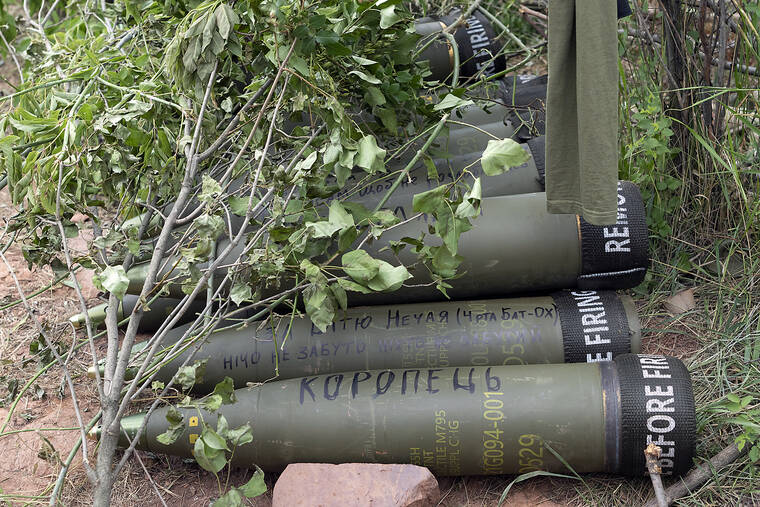US aid to Ukraine puts pressure on Pentagon’s arms stockpile
WASHINGTON — The intense firefight over Ukraine has the Pentagon rethinking its weapons stockpiles. If another major war broke out today, would the United States have enough ammunition to fight?
It’s a question confronting Pentagon planners, not only as they aim to supply Ukraine for a war with Russia that could stretch years longer, but also as they look ahead to a potential conflict with China.
ADVERTISING
Russia is firing as many as 20,000 rounds a day, ranging from bullets for automatic rifles to truck-sized cruise missiles. Ukraine is answering with as many as 7,000 rounds a day, firing 155 mm howitzer rounds, Stinger anti-aircraft missiles and now NASAMS air defense munitions, and thousands of rounds of small arms fire. Much of Ukraine’s firepower is being supplied through U.S. government-funded weapons that are pushed almost weekly to the front lines. On Wednesday, the Biden administration announced an additional round of aid that will provide 20 million more rounds of small arms ammunition to Kyiv.
“We’ve not been in a position where we’ve got only a few days of some critical munition left,” Pentagon comptroller Michael McCord told reporters this month. “But we are now supporting a partner who is.”
U.S. defense production lines are not scaled to supply a major land war, and some, like for the Stinger, were previously shut down.
That’s putting pressure on U.S. reserves and has officials asking whether U.S. weapons stockpiles are big enough. Would the U.S. be ready to respond to a major conflict today, for example if China invaded Taiwan?
“What would happen if something blew up in Indo-Pacom? Not five years from now, not 10 years from now, what if it happened next week?” Bill LaPlante, the Pentagon’s top weapons buyer, said, referring to the military’s Indo-Pacific Command. He spoke at a defense acquisitions conference this month at George Mason University in Virginia.
“What do we have in any degree of quantity? That will actually be effective? Those are the questions we’re asking right this minute,” he said.
The Army uses many of the same munitions that have proven most critical in Ukraine, including High Mobility Artillery Rocket Systems, known as HIMARS, Stinger missiles and 155 mm howitzer rounds, and is now reviewing its stockpile requirements, Doug Bush, the Army’s assistant secretary for acquisition, said.
“They’re seeing what Ukraine is using, what we can produce and how fast we can ramp up, all of which are factors you would work into, ‘OK, how (big) does your pre-war stockpile need to be?”


